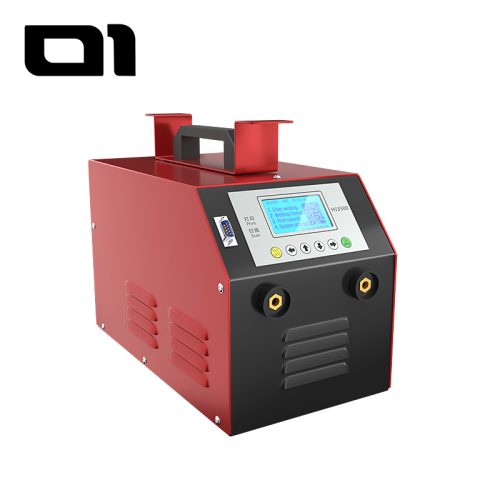In the world of industrial applications, the electric fusion welding machine stands as a pivotal tool. This machine is essential for creating strong, durable joints in piping systems. But what exactly is an electric fusion welding machine, and how does it work? This article will break down the components, functionality, and applications of electric fusion welding machines, particularly focusing on their use with HDPE pipe fittings and other materials.
What is Electric Fusion Welding?
Electric fusion welding, often referred to as electrofusion welding, is a technique used to join thermoplastic pipes and fittings. This method is particularly popular for joining high-density polyethylene (HDPE) pipes, which are commonly used in water and gas distribution systems.
The process involves using an electric fusion welding machine to pass an electrical current through a fitting that has embedded heating elements. When activated, these elements heat the fitting and the surface of the pipe, causing both to melt and fuse together as they cool. This creates a strong, uniform joint that is as robust as the original pipe material.
Main Components of an Electric Fusion Welding Machine
Power Unit
The power unit is the heart of the electric fusion welding machine. It supplies the necessary electrical current to the heating elements embedded in the fittings. The power unit is designed to deliver precise amounts of energy, which is crucial for ensuring a strong and consistent weld.
Control Interface
Most machines are equipped with a control interface, allowing operators to input specific welding parameters. This interface ensures that the machine delivers the correct amount of energy for the specific size and type of fitting being used. Advanced models may feature digital displays and programmable settings for ease of use.
Connection Leads
These are the cables that connect the power unit to the fitting. They are designed to handle high currents and are usually fitted with connectors that match the fittings being used.
Advantages of Electric Fusion Welding Machines
There are several reasons why electric fusion welding machines are favored in industrial applications:
- The ability to precisely control the welding parameters ensures consistent, high-quality joints.
- They can be used with a wide range of pipe sizes and materials, including HDPE and other thermoplastics.
- Many are portable, making them ideal for field use and remote installations.
Applications of Electric Fusion Welding
Water and Gas Distribution
HDPE pipes are widely used in water and gas distribution networks due to their durability and resistance to corrosion. Electric fusion welding ensures leak-proof joints, making it the preferred method for these applications.
Industrial Piping Systems
In factories and industrial plants, electric fusion welding is used to construct piping systems for transporting chemicals, slurries, and other materials. The reliability of the joints is crucial in these environments to prevent leaks and ensure safety.
Wastewater Management
Electric fusion welding machines are also used in the construction of wastewater management systems. The strong, watertight joints they produce are essential for preventing leaks and maintaining the integrity of the system.
Technological Advancements
The field of welding technology is constantly evolving, and electric fusion welding machines are no exception. Advances in technology have led to machines that are more efficient, easier to use, and capable of producing even stronger joints.
Automation and Smart Features
Some of the latest machines come equipped with automation features that simplify the welding process. Smart technology can adjust welding parameters automatically based on the type and size of the pipe, reducing the risk of human error.
Enhanced Safety Features
Modern machines are also designed with enhanced safety features to protect operators. These may include automatic shut-off mechanisms, overload protection, and improved insulation on connection leads.
Choosing the Right Machine
Selecting the right machine for your needs involves considering several factors:
- Compatibility: Ensure that the machine matches the size and type of pipes.
- Portability: For fieldwork, choose a lightweight and easy-to-transport model.
- Ease of Use: Look for a machine with a user-friendly interface, programmable settings, and digital displays.
Conclusion
Electric fusion welding machines are an essential tool in many industrial applications, providing a reliable and efficient method for joining thermoplastic pipes and fittings. With their precision, versatility, and portability, these machines help ensure the integrity and performance of piping systems across a variety of industries. As technology continues to advance, these machines are becoming even more effective and user-friendly, making them an invaluable asset in modern welding applications.









